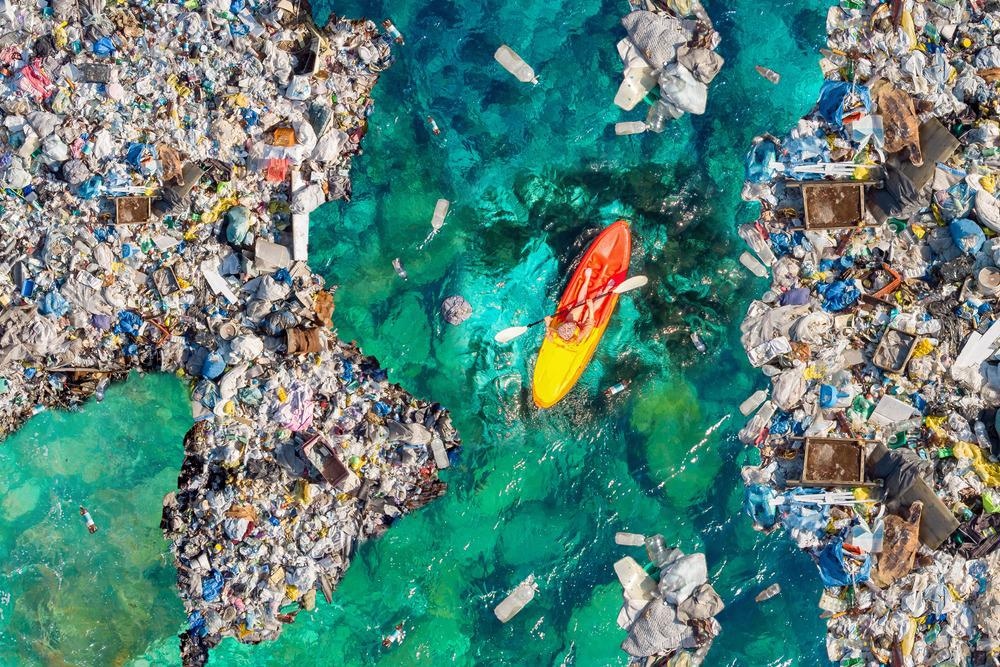AZoCleantech speaks to Jenna Guffogg about their research on remote sensing and its use in coastal plastic waste. Guffogg talks about the extent of plastic waste in beach areas and how satellite imaging will improve the ability to track and remove it.
How did you begin your research into remote sensing and coastal plastic waste?
Initially, there were two separate interests. The research from my master’s degree focused on the use of satellite imagery to track long-term recovery in state forests after logging events, while in my personal life I was working to reduce my plastic footprint. While I was investigating research themes for my Ph.D., I came across an article by a European group that was investigating how satellites could be used to monitor ocean plastics. I pitched the research topic to my supervisors, and after a few months of investigation, we decided to proceed.
What is the current extent of plastic waste in coastal regions?
Given that there are now 5.25 trillion pieces of plastic in the oceans, and how easily these can move around, this is a problem that can affect almost any coastline on the planet. But it is difficult to answer this with a concrete metric – beaches are one of several ‘sinks’ or accumulation points, and plastics in the ocean and coastal environments can change rapidly; a large storm can result in a significant deposit of plastic on what is otherwise a clean area.
What we do know is that some of the highest densities of plastic pollution have been recorded on beaches. Henderson Island in the Pacific Ocean is a good example of this- it is incredibly remote, no one lives there, but it has some of the highest plastic densities recorded globally because ocean currents bring debris there.
Why is it important to remove this plastic from the ocean?
Plastic is much easier to remove from the environment if it stays on the land. Oceans are incredibly big, remote areas and it is challenging to remove plastic waste from them – though groups such as the Ocean Cleanup Foundation are trying to tackle this. There is a lot more plastic floating in the oceans than washed up on beaches, so removing them from as many places as possible is key.

Image Credit: Parilov/Shutterstock.com
Marine and beach plastics can have a range of impacts – the impact on marine animals is well documented, and there are also economic impacts. Plastic debris has been found to impact local fishing industries and cause loss of income in tourist hotspots. Whether you look at it from an environmental or economic perspective, plastic pollution has some pretty negative impacts that we need to address.
Plastics in the ocean (and on beaches) also break down over time into smaller and smaller pieces, eventually resulting in micro-and nano-plastics which are consumed by organisms – some of which are part of our own food chain. There have been some studies showing that when fish and bivalves consume this plastic, it has negative health consequences, including reduced reproductivity and inflammation. Those plastics do not go away and they can bio-accumulate up the food chain. We do not know yet what impact that could have.
Can you tell us about your unique remote sensing technology and its potential?
Our research focuses on spectral absorption features that plastics have in infrared radiation. Many materials respond to infrared light in unique ways, resulting in patterns (called spectral signatures) that we can monitor using satellites. Once you have a good idea of what those spectral signatures look like in the environment you are targeting (in our case, plastic signatures on beaches), you can develop algorithms that can detect those signatures. The great news is that there has been a lot of interest in using this type of method to find plastics out at sea. We have taken a slightly different approach and are trying to develop methods that can be used on beaches. While there are some similarities, the methods being developed for open ocean plastic detection are not directly transferrable to the beach environment, so we are having to develop a different set of algorithms.
Why has your team focused on beach areas as opposed to oceans as a whole?
While the amount of plastic in the oceans is significantly greater than the amount on beaches, beaches are accessible and plastic removal is more cost-efficient. So, we want to develop a solution that can help with these cleanup efforts. Also, in order to know how much plastic is in the marine environment, we will need to know both the amount of floating and washed-up debris. At the moment, the estimates of how much plastic there should be in the oceans and how much is being found do not match up – we should be finding more than we are. Tracking plastics on beaches might help us improve those estimates and get a better idea of the actual size of the problem.
What are the current methods for detecting plastic debris? Are there any challenges to these methods?
The good news is that infrared signatures are not the only method available to us – and realistically, we will need to use a variety of technologies at different scales. Keeping an eye on your local beach is a different task from monitoring remote coastlines. Using drones, particularly small, user-friendly RGB drones, is an area that has been getting a lot of attention and it shows real promise. These methods rely on detecting individual pieces of plastic rather than the infrared signatures we are using, which can be challenging given a lot of plastics lose their color at sea and can be hard to pick out from the sandy background.
Drones also do not scale well, so they are not appropriate for large-area monitoring. But, they are a really fantastic option for smaller areas and offer some advantages over infrared signatures; they are much easier for local groups to get hold of and offer a relatively cheap option compared to larger, expensive sensors. I think we will see both options being used in the future.
How will satellite imaging improve the ability to track and remove plastic waste?
The biggest advantage that this technology will give us is large-area coverage and consistency. We are not at the stage of it being deployable yet as this is still new research and a lot of work still needs to be done. However, once there is a working model, it can be scaled to cover really large areas (catchment, state, country), and, thanks to their regular orbits, we will be getting consistent measurements over time. These two criteria are hard to achieve at the moment using the options we have for monitoring plastic debris.
Is there a limit to the types and size of plastic that this remote sensing technology can track? How were you able to test this?
Our research indicates that some types of plastic are harder to detect than others – in particular, items made of PET are more challenging, both because the spectral signature of this type of plastic is different from other commonly found plastic waste, and also these items are often translucent – such as a plastic water bottle. There also needs to be a certain level of plastic pollution present before our method will work – between 2-8% of a beach’s surface.
We tested this by keeping the amount of plastic in our experiment the same (for example, enough to cover 5% of a pixel) and changing the type of plastic. That is how we found the minimum amount of PET needed before we can detect it is higher than for other plastics. There has also been fantastic research done by other researchers in Europe and the US to create online databases of spectral signatures for a whole range of different types of marine plastics. These databases will help to improve our detection accuracies.
What are the next steps for the project?
There has been great progress over the last few years in developing these infrared spectral detection methodologies, both here in Australia as well as overseas. We are really excited that several new satellites are going to be launched, starting this year, that we expect will be great platforms for our methods to be used with.
Where can readers find more information?
Please provide links to any materials that may be relevant to our audience.
Current research we have been involved in for marine plastics:
https://www.mdpi.com/2072-4292/13/22/4548
https://www.mdpi.com/2072-4292/13/9/1850
For those wanting to learn more about efforts to remove plastics from oceans:
https://theoceancleanup.com/
Another option for those looking to get involved in beach cleanups would be to look at their local Sea Shepherd marine debris Facebook group, as they organize several cleanups per month.
About Jenna Guffogg
 Jenna is a joint PhD-candidate at RMIT University Australia and the University of Twente, Netherlands. They are a member of the Remote Sensing Centre at RMIT, where their research has included developing new methods of using satellites to monitor disturbances and changes in the environment. They have a background in geology and geospatial science and have worked on local government projects using satellites to track the health of public forests. Their current research focuses on harnessing satellite technology to address the growing problem of marine plastic pollution.
Jenna is a joint PhD-candidate at RMIT University Australia and the University of Twente, Netherlands. They are a member of the Remote Sensing Centre at RMIT, where their research has included developing new methods of using satellites to monitor disturbances and changes in the environment. They have a background in geology and geospatial science and have worked on local government projects using satellites to track the health of public forests. Their current research focuses on harnessing satellite technology to address the growing problem of marine plastic pollution.
Disclaimer: The views expressed here are those of the interviewee and do not necessarily represent the views of AZoM.com Limited (T/A) AZoNetwork, the owner and operator of this website. This disclaimer forms part of the Terms and Conditions of use of this website.